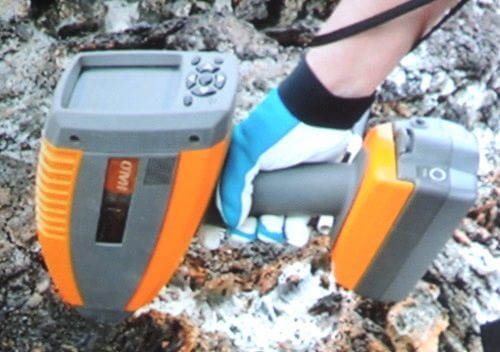Geologists dream of a Star Trek-inspired probe

NASA wants to take a geological tricorder to Mars. A researcher preparing for the mission asked attendees at the Sensors Expo in San Jose if they could build one.
The space agency now has four portable scientific instruments that weigh about 10 kg. They do a reasonable job, but there is room for improvement and they are a bit too much to carry around. The astronauts will be weighed down by large suits, oxygen tanks and backpacks. They have a limited amount of time to perform a wide variety of tasks on foot over rocky terrain with no hospitals within a million and a half kilometers if they fall.
"We would like to have multiple devices in one device. Can we build this thing?” asked Alexander Selka, a research associate in the BASALT project at NASA's Ames Research Center, in a speech at the conference.
As part of this work, the team identified several requirements for their electric tools for Mars. For example, apart from small weight and size, they need to capture high quality data. It is not easy because they have to interact with jagged rocks, and detect elements sometimes in 5 mm cracks when the contacts are bad and there are many signal returns.
The devices need to analyze the data in a short time, in part to speed up communication. In one of the tools, a library of the spectral profiles of minerals is embedded to speed up the identification. Such tricks help because the waiting time back to Earth where the online data is stored varies from 4.5 to 20 minutes.
Today some of the team's devices stream data via Wi-Fi or Bluetooth to local servers that can send it back to Earth. But others require manual reading of the data, sometimes by taking screenshots or at best a multi-step process of booting the device and synchronizing it with a server. Very unreasonable!
Here's one component you won't find in your Black & Decker drill: the devices usually include small pumps to evacuate internal gases to improve the accuracy of the readings. The good news is that the laser and X-ray system the team is using now have many overlapping parts and functions. Unfortunately, an infrared device is quite different.

5 תגובות
The article looks like it was translated by Google...
An unclear, unfounded and poorly written article. Uncharacteristic of the excellent nature of the site. Return to the editing table
I have a similar device at work, the device sends a laser beam (of varying wavelengths) that hits the material and is reflected from it, and the device records the reflection spectrum and identifies the material according to the shape of the absorption (or reflection/fluorescence) spectrum of the light that is reflected from the material.
There are devices on the market that are based on the IR spectrum - ("Nir" or "Raman"). In principle, it can also be identified by other spectra.
These devices are mainly used to identify organic substances that have a characteristic absorption/reflection spectrum in infrared light.
Such devices are also used by the military to detect chemical warfare agents.
Don't know what their use is in identifying minerals.
- What is a "tricorder"?
- It says: because the astronauts carry "oxygen tanks"?
As someone who was involved in diving, the divers carry compressed air tanks,
Do astronauts breathe differently?
So what is a "geological tricorder"? Any measuring device? measure what? The article has an unclear reference to infrared, spectral profiles, gases, Wi-Fi, interaction with jagged rocks....
Only nothing connects. It is not clear what this is about. And the series Star Trek was stupid and it is not clear how it could affect NASA.
So my father - take down the article or rewrite it. Sorry.